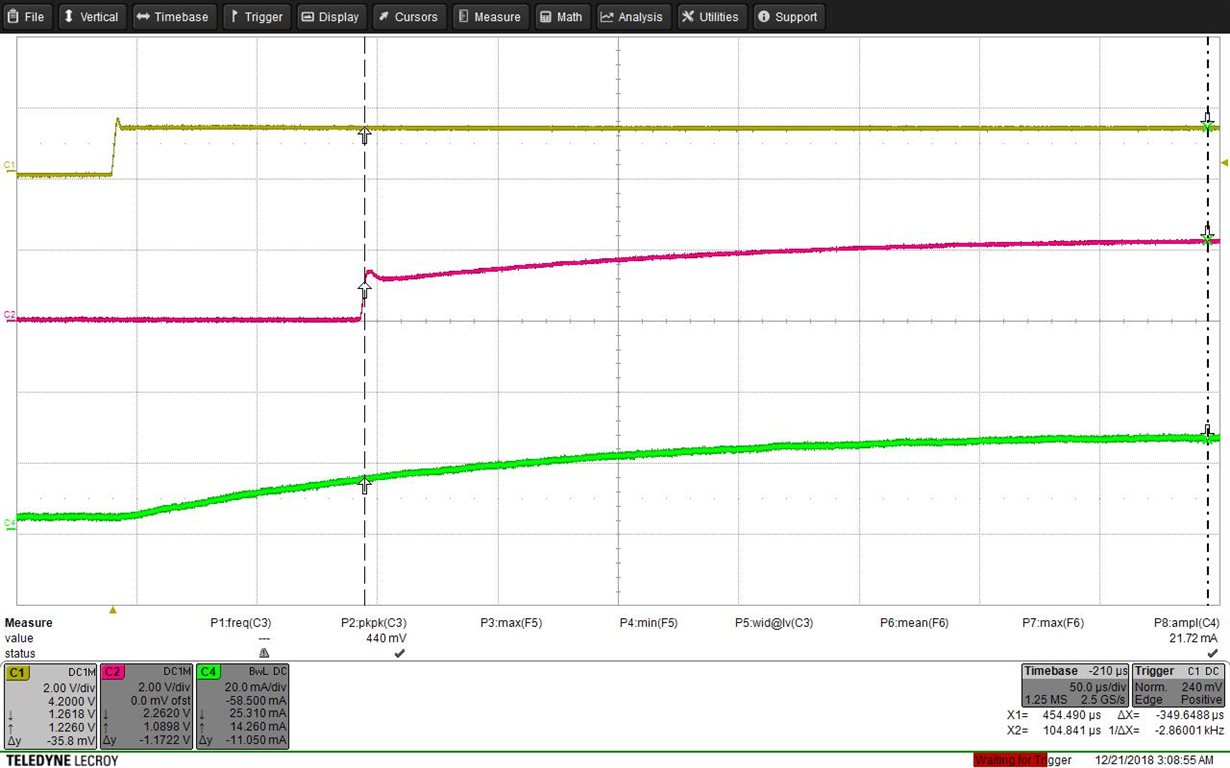Hi,
I am trying to measure small currents with the INA225. (Imax 25mA) High-side 24V. Rshunt = 1Ohm. Gain 100. Vs = +5V.
I have the following measurement C1 is a control step-input. C2 signal measured by INA225 (no load). C4 an external current probe. slowly rising current on C4 is OK (for the moment) there's a PMOSFET controlling the current, which is charging slowly.
What I don't like is INA225 starting to measure only at about 14mA (14mV). Is that behavior intended by TI? How can I know from the datasheet? What can I do better?
Second thing. For larger/faster steps, there is a delay of around 22us from input to output, that I cannot find a reason for.
Thanks for any help/correction/advise!
Simon



